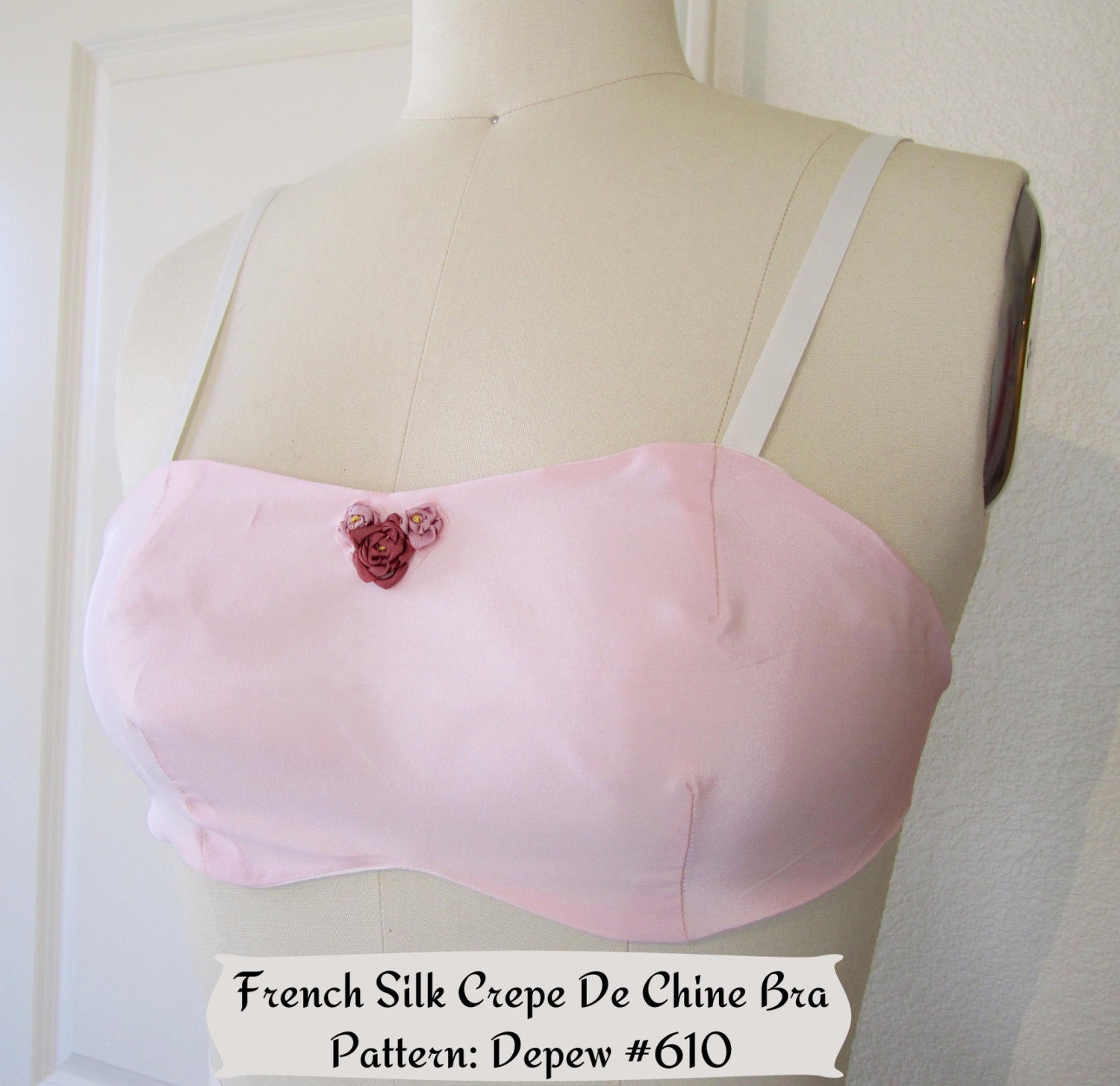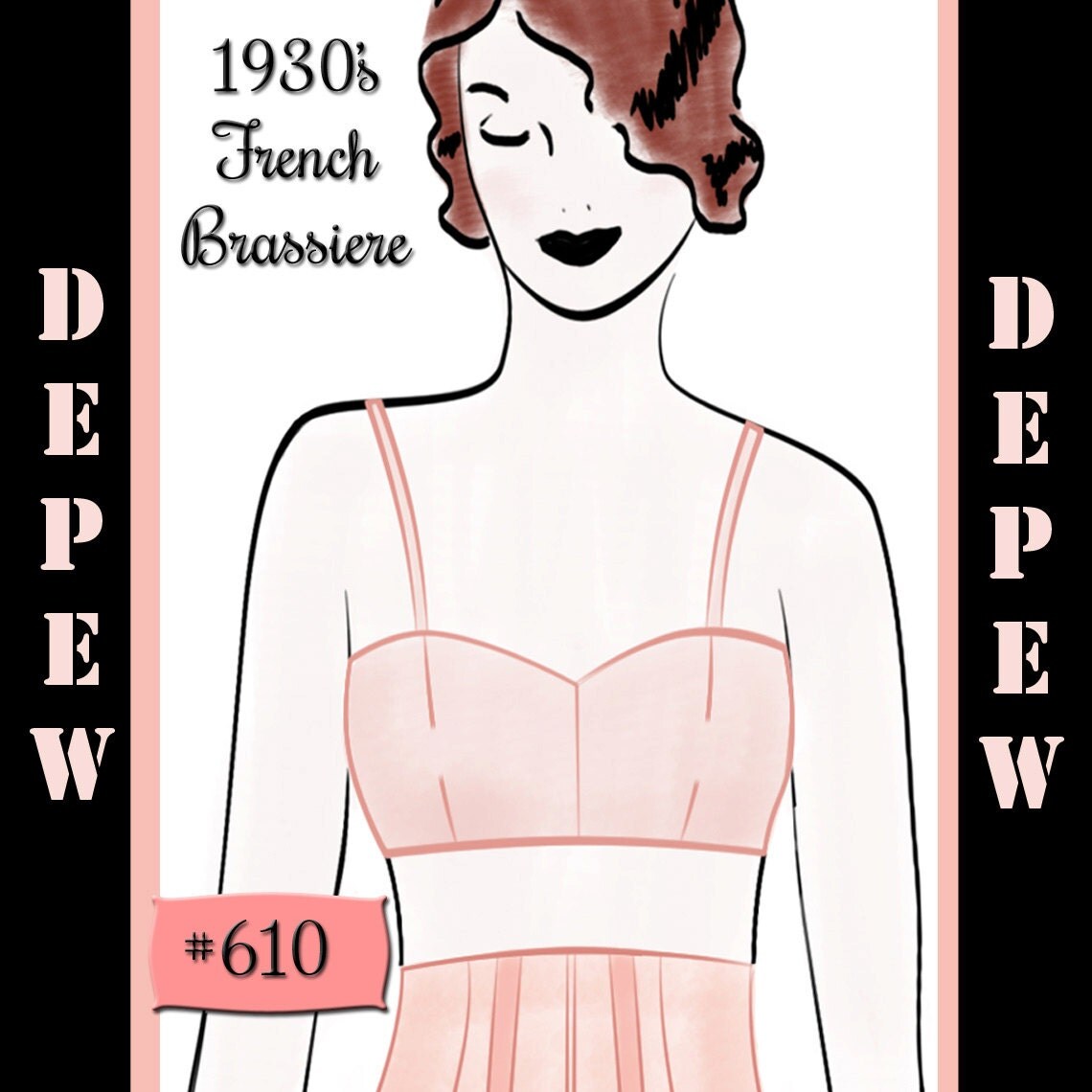Aaaaand we're back with more bra sewing! At this point, we've drafted our pattern and cut out our test muslin for the bra. Don't you just love how the whole bra is just one piece of fabric? It definitely makes life easier!
I have cut out and sewn the darts in my silk version - the fabric I'm using? It's from an old set of silk charmeuse pajama pants that didn't survive my tossing and turning for long. The fabric has a bit of wear to it, but it's still pretty and feels heavenly on the skin. Waste not, want not - n'est pas?
For both your test muslin and the actual bra, you'll be sewing quite a few darts. Between my muslin, my adjusted muslin, and the bra in silk, that's 12 darts - 16 if you're lining the darn thing. So it helps to know a few things about sewing bust darts, and darts in general.
It's smart to start at the bottom and sew your way towards the tip, but here are a few more tips:
- For bust darts, adding a very slight curve at the tip of the dart will help the garment contour better to the roundness of your bust. See more about that here.
- At the tip of the dart, don't back-stitch, instead, pull the garment out from your sewing machine and leave a trail of threads long enough to tie a loose knot. Make sure that there are a few millimeters of ease between the knot and the dart.
 |
| My pin stealthily rusted onto my fabric, the horror! |
- Press your darts flat before pressing them open. This will help set the stitches in the fabric.
- And by far, my favorite tip for pressing my bust darts is to use an old bra! Fold the bra (the ones that are thickly padded are best) in half so that it supports itself and then cover it with a towel or press cloth.
The lovely little mound that it creates is vastly superior to my own pressing ham and perfect for pressing bra darts.
 |
| An old bra makes the perfect shape for pressing bra darts on. |
 |
| Pardon the wrinkles, I pressed the darts ok but the rest of the bra will just wrinkle again during handling, lining or binding so I don't even bother with the rest of it. |
My wounds are still very raw from losing Mom only four months ago so this coming week will not be an easy thing to survive sober (though I'll be trying).
Wish me luck!
























